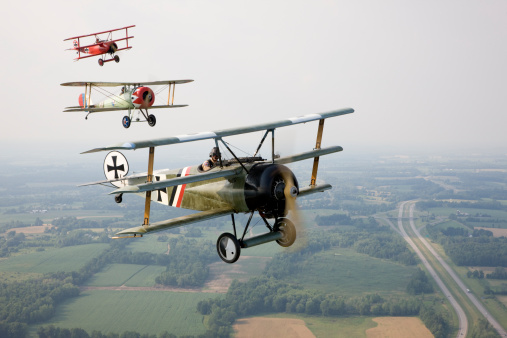After the Wright Brothers’ historic flight in 1903, it was only a matter of time before aircraft were designed to aid in military operations. World War I saw the first use of manned aircraft in combat. Necessity powers innovation, and it was aviators who took to the skies during the war who quickly helped to advance the technology of flight, largely through trial and error.
The first aircraft carriers, the first bombers, the first anti-aircraft weapons, and the first fighter aircraft were all created during this period. Here are six things you also probably didn’t know about World War I aircraft:
- There were about 70 different types of aircraft used during the war by all of the countries involved. Each force assigned different marking to their aircraft to try and prevent allies from shooting at one another.
- The Germans were the first to create a machine gun that synched with the aircraft’s propeller, which led to the first aerial dogfights.
- Arguably, the most famous aircraft during the war was the British Sopwith Camel, which is credited with taking down nearly 1,300 enemy aircraft.
- Manfred von Richthofen, also known as the Red Baron, achieved 80 victories in the skies over Europe, the most of any flying ace during the war.
- Aircraft during this period had a maximum speed of about 100 MPH – and that was really pushing it.
- The cockpits during this period were so small that pilots couldn’t wear parachutes, even if permitted (in fact, some generals forbid the use of parachutes because they believed it dampened the fighting spirit of the pilots. Luckily, times have changed).
